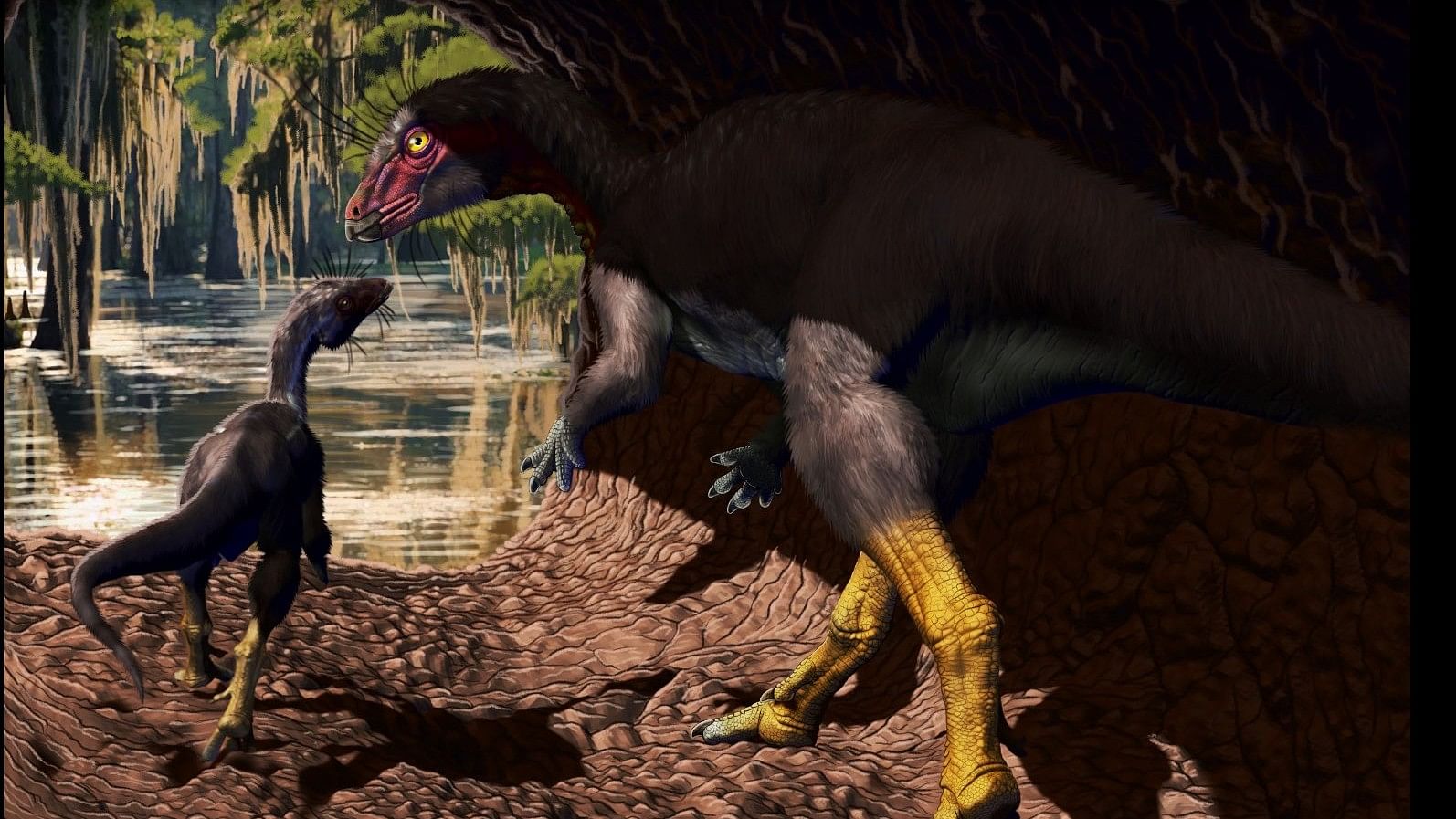
Fona herzogae is the new species.
Credit: X/@ExpeditionLive
When one hears dinosaurs, one pictures giants who ruled the earth millions of years ago. However, some of them were small and spent their time in underground burrows, as a fossil has shown.
Paleontologists from North Carolina State University and the North Carolina Museum of Natural Sciences have unearthed a new dinosaur species from Utah's Cedar Mountain Formation in the US.
Fona herzogae, the new species, existed 99 million years ago and scientists discovered many more remains of different individuals belonging to the same species there, along with the fossil.
The head of paleontology at the North Carolina Museum of Natural Sciences noted that Fona skeletons are 'way more common' in the area than one would predict for a small creature with fragile bones.
The scientist added that the best explanation for why so many have been found and why they were recovered in small bundles of multiple individuals is that they were at least spending part of their time underground.
The anatomical features, along with the well-preserved nature of the fossil, suggests that these dinosaurs spent part of their lives in underground burrows - a form of living called semifossorial.
This species is also said to be ancestors of Thescelosaurus, the genus of the goat-sized dinosaurs which emerged around the end of the Late Cretaceous era in North America.
The fossilised remains point to a burrowing lifestyle, since powerful bicep muscles, fused pelvis for stability at time of digging, robust muscle attachment points on legs and hips, as well as hindlimbs being significantly larger than forelimbs suggest that this species was well-equipped to live beneath the surface.
It appears this dinosaur was a large dog-sized herbivore. This species is also a distant cousin of another dinosaur species which lived underground, the Willo or Thescelosaurus neglectus, which North Carolina researchers had unearthed as well.
While larger dinosaurs' bones have a greater likelihood of fossilising, Fona's skeletons suggest they were possibly buried in their burrows underground.